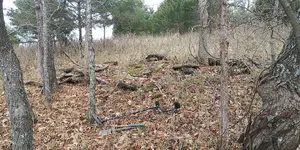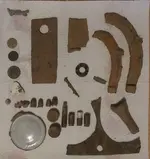diggummup
Platinum Member
- Joined
- Jul 15, 2004
- Messages
- 17,824
- Reaction score
- 10,135
- Golden Thread
- 0
- Location
- Somewhere in the woods
- Detector(s) used
- Whites M6
- Primary Interest:
- All Treasure Hunting
- #1
Thread Owner
Natural? In the middle of the woods halfway up a ridge. No signals of any kind in the vicinity. There was another about 100 yds away, similar size. Clean ground there also. Measures about 15 - 20 feet across.






